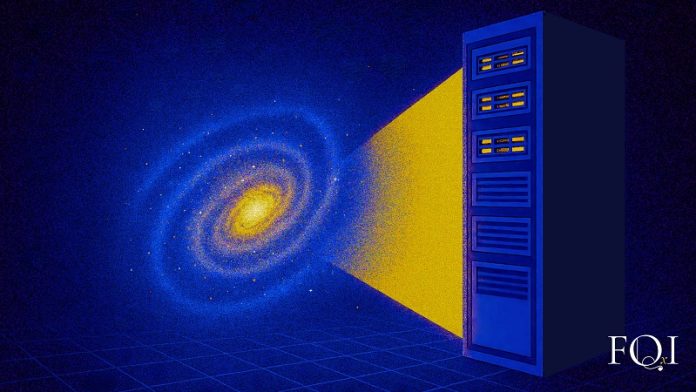
“What happened before the Big Bang?”
It’s a question that has fascinated people for generations—and one that many scientists have often dismissed as meaningless.
The standard answer is that physics simply breaks down when you rewind the universe all the way back to its beginning.
At that point, everything collapses into a singularity—a state of infinite density and temperature where Einstein’s equations no longer work. But a new paper argues that there may be a way forward, using one of the most powerful tools in modern physics: numerical relativity.
The paper, written by cosmologist Eugene Lim of King’s College London, astrophysicist Katy Clough of Queen Mary University of London, and Josu Aurrekoetxea of Oxford University, was published in Living Reviews in Relativity.
The researchers suggest that computer simulations could help cosmologists push beyond the limits of pen-and-paper mathematics and explore questions that once seemed out of reach, from the origins of cosmic inflation to the possibility of a multiverse.
Einstein’s theory of general relativity describes gravity and the motion of celestial bodies with remarkable accuracy.
But solving his equations exactly is only possible under simplifying assumptions—chief among them that the universe is “isotropic” and “homogeneous,” looking roughly the same everywhere and in every direction.
This assumption works well for describing today’s universe, but it may not be valid in the extreme, chaotic conditions of the Big Bang.
“You can search around the lamppost, but you can’t go far beyond the lamppost, where it’s dark—you just can’t solve those equations,” Lim explained.
Numerical relativity, by contrast, allows researchers to go beyond the lamppost. Instead of trying to find exact solutions, it uses powerful supercomputers to approximate answers to Einstein’s equations in messy, complex situations.
The method has already proved essential in one famous area: black hole collisions. First proposed in the 1960s and 1970s, numerical relativity was later revived in the 1980s as physicists prepared for the LIGO experiment to detect gravitational waves.
The breakthrough came in 2005, when scientists successfully simulated merging black holes. Those results laid the foundation for LIGO’s eventual discovery of gravitational waves in 2015.
Lim and colleagues believe the same approach could now revolutionize cosmology. One problem they’re keen to explore is inflation, the mysterious period when the infant universe suddenly ballooned at a staggering rate.
Inflation explains why the universe looks smooth and similar across vast distances today. But why did it start, and how exactly did it work? Traditional models can’t answer this without assuming the very uniformity that inflation was meant to explain.
With numerical relativity, cosmologists could test more exotic starting conditions and even explore predictions from string theory, which suggests the existence of objects like cosmic strings—thin defects in spacetime that may have formed in the early universe.
Numerical relativity might also help test multiverse ideas. If our universe once collided with a neighbor, the crash could have left subtle marks—or “bruises”—on the sky. Simulations could predict what those signatures might look like.
Another tantalizing possibility is that the universe didn’t begin at all, but instead “bounced” from a previous one. A cyclic universe, undergoing repeated bangs and crunches, has long been an idea on the fringe of physics. But it’s a scenario numerical relativity could finally put to the test.
Running these simulations isn’t easy. They require supercomputers and sophisticated code, but as computing power grows, the prospects for exploring such radical questions improve. The team’s new paper aims to bridge the gap between cosmologists and numerical relativity experts, encouraging more collaboration.
“We hope to actually develop that overlap,” said Lim. “Numerical relativists who are interested in cosmology can bring their techniques into the field, and cosmologists who have questions they can’t solve can start using numerical relativity.”
In other words, the mystery of what came before the Big Bang may not remain unscientific forever. With the rise of computational power, researchers may soon be able to run the universe backwards—at least virtually—and peer into the darkness beyond the lamppost.



